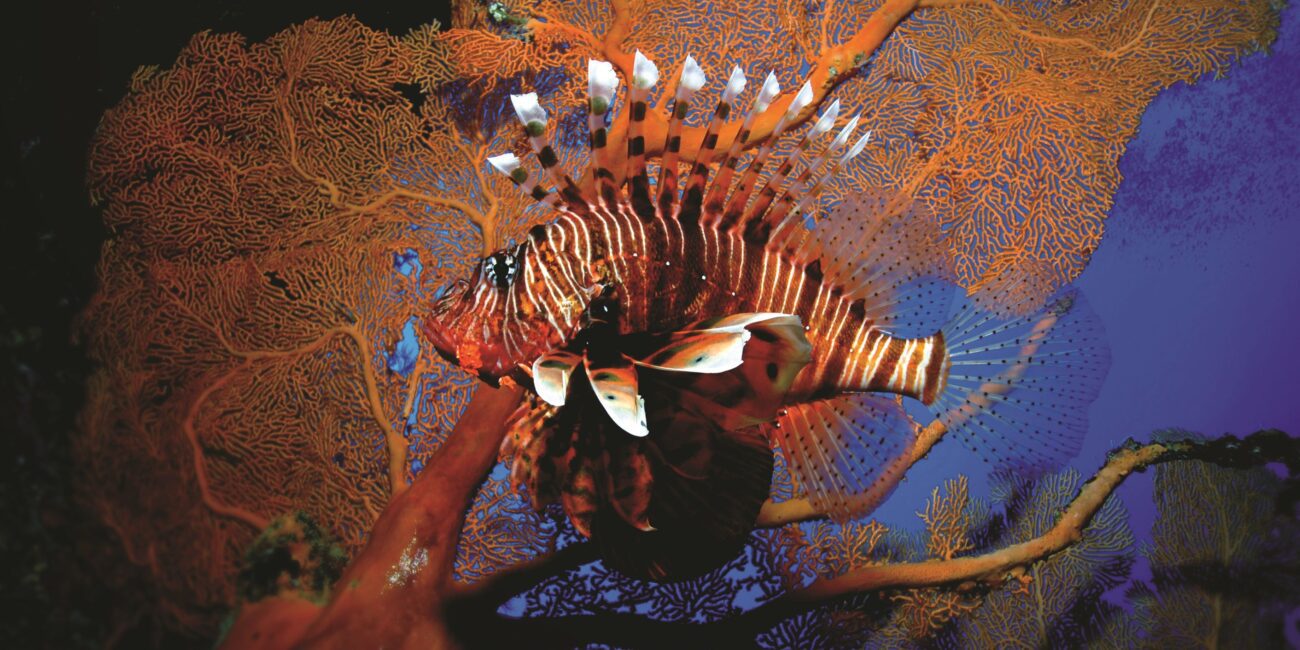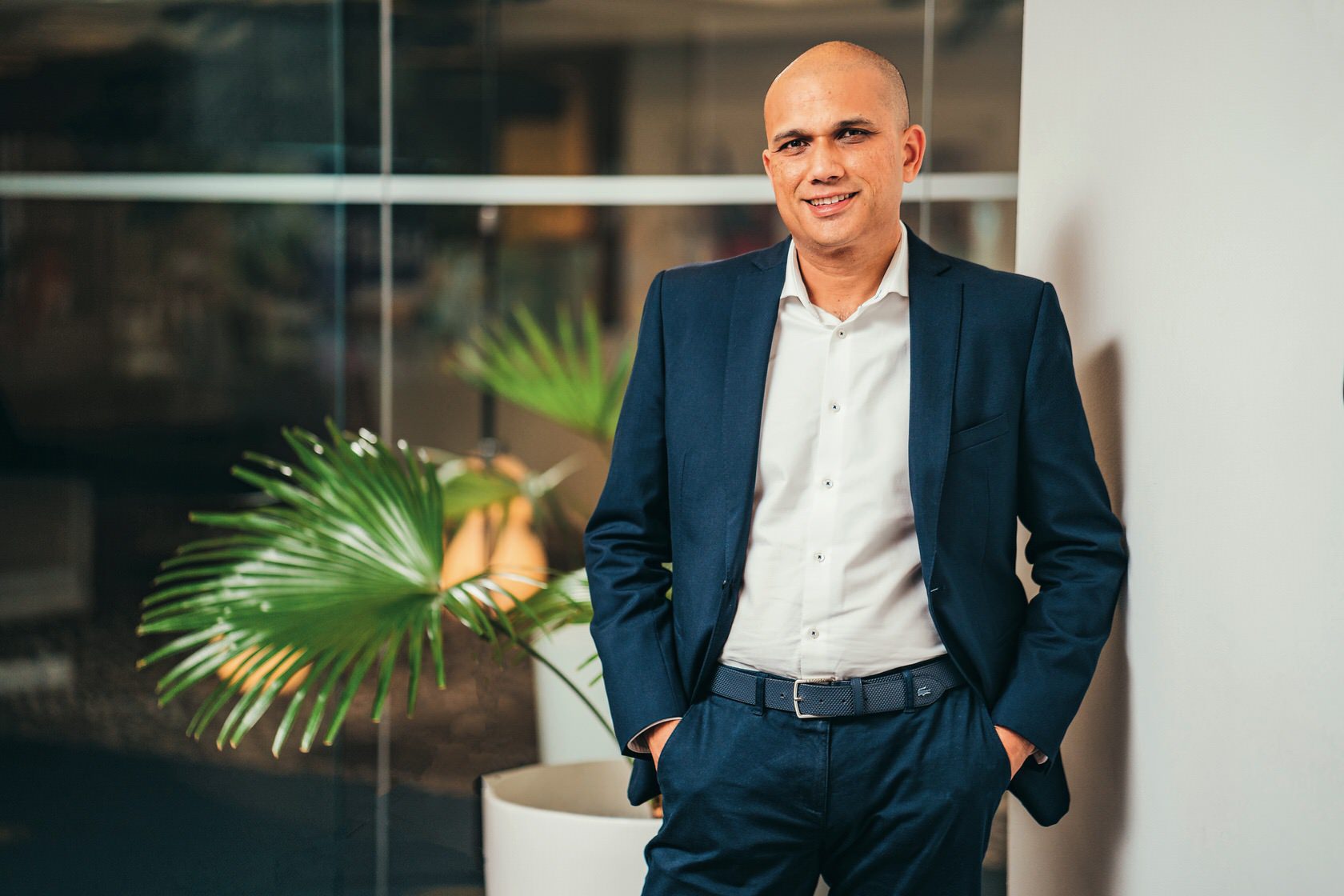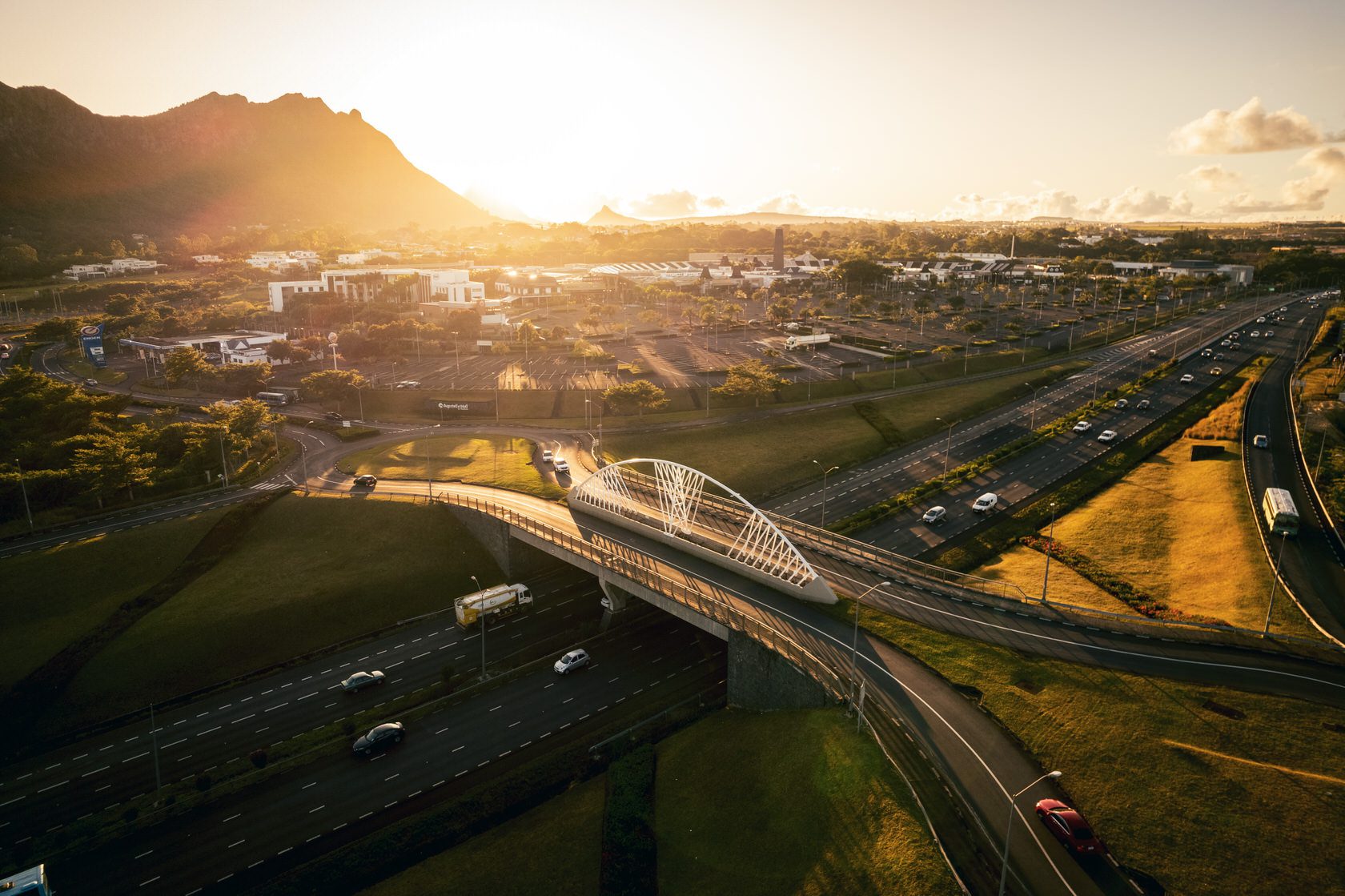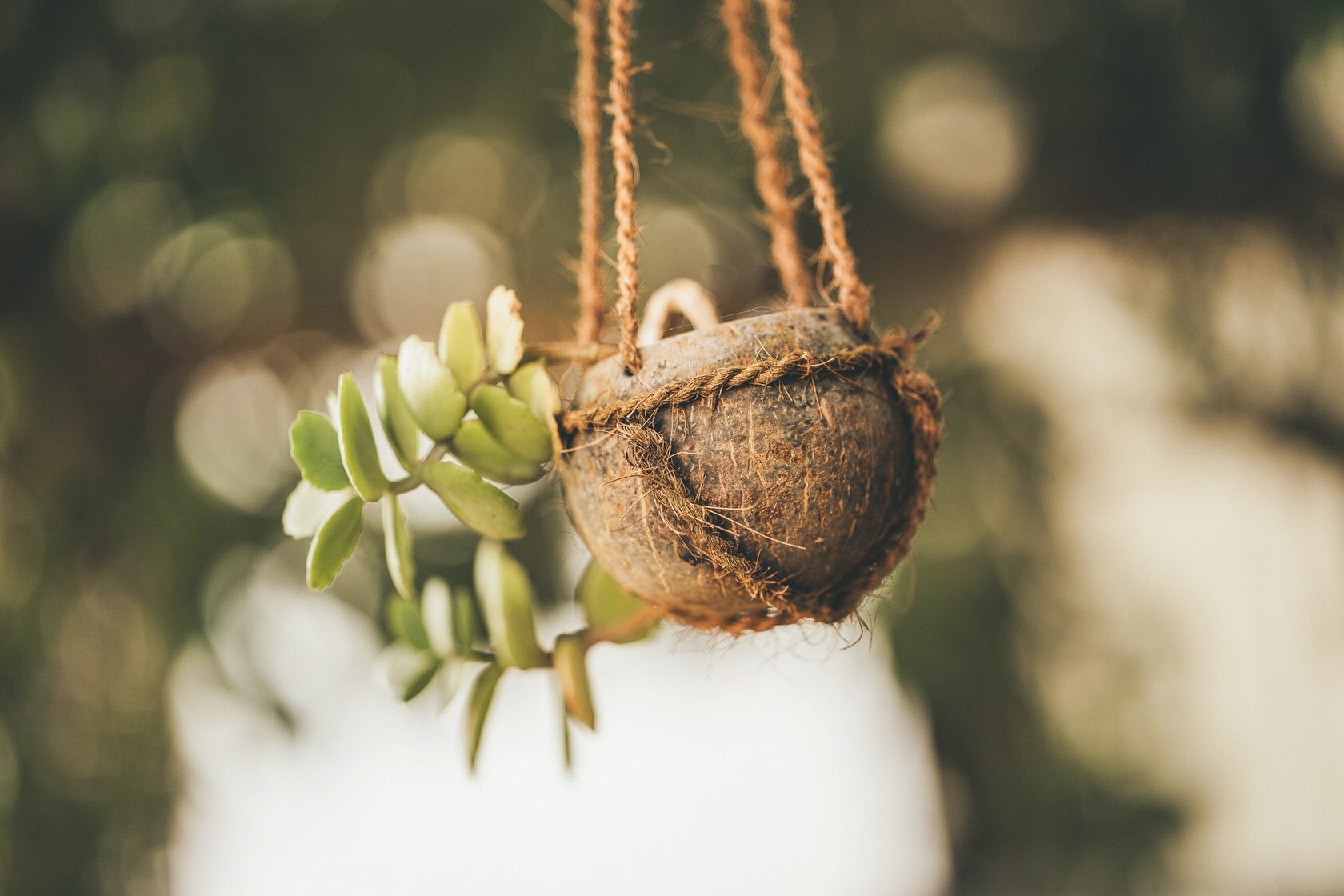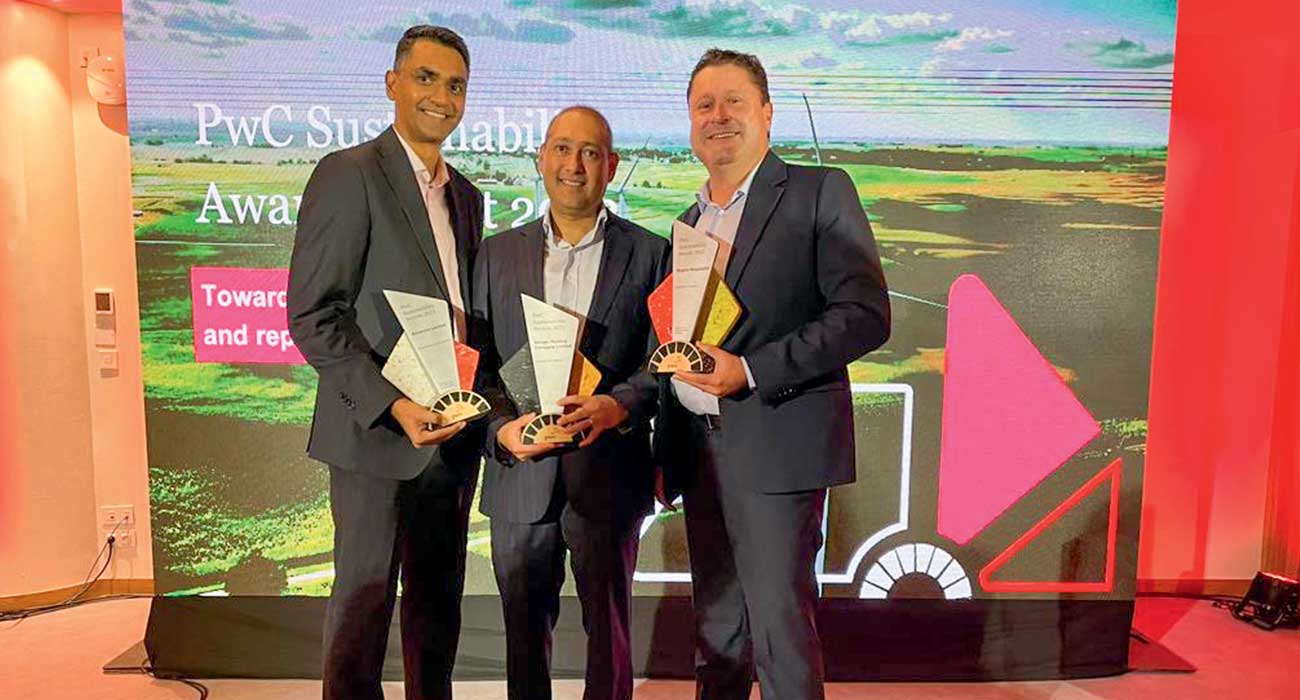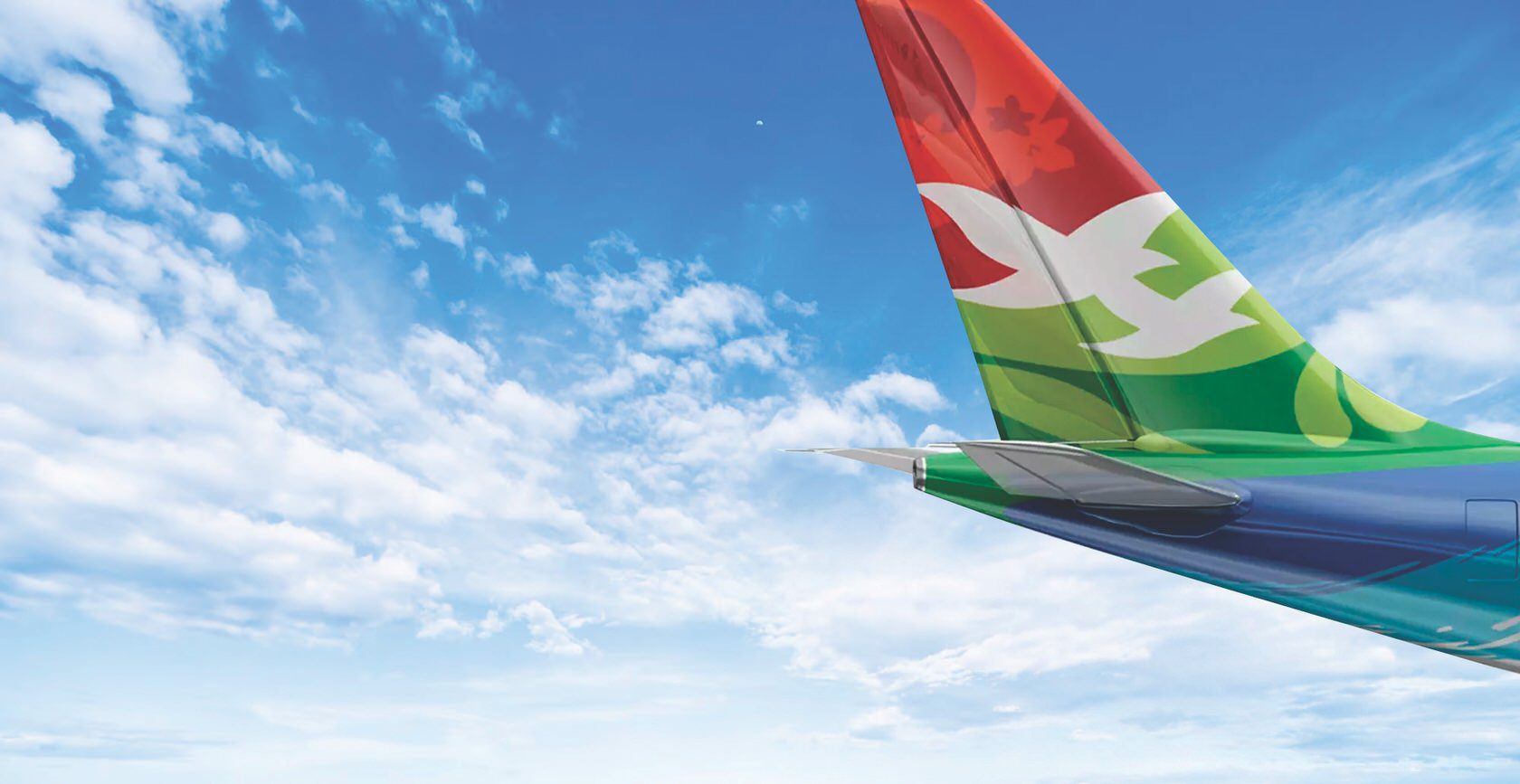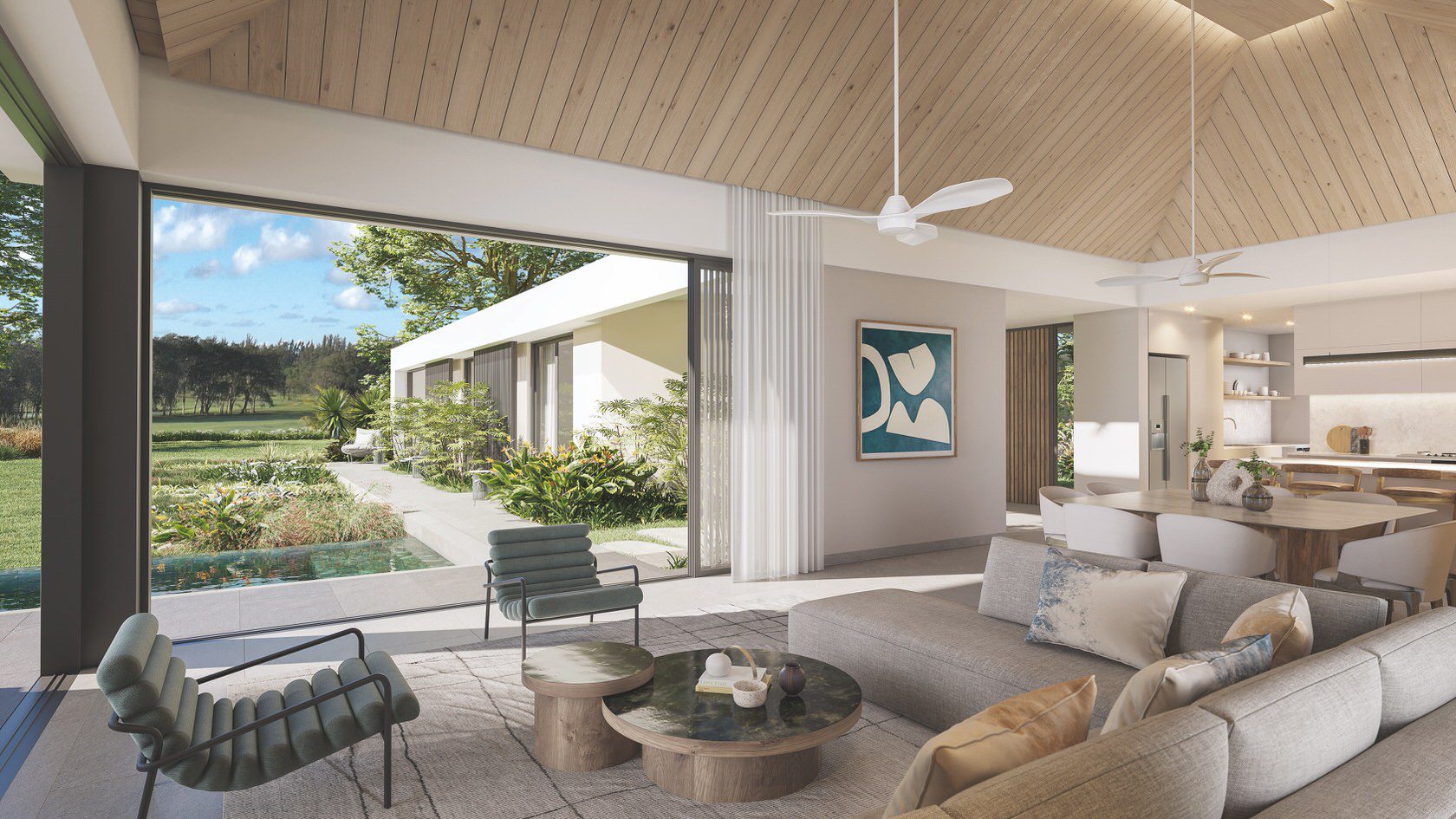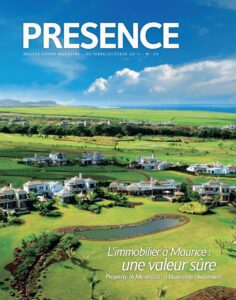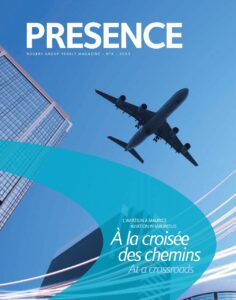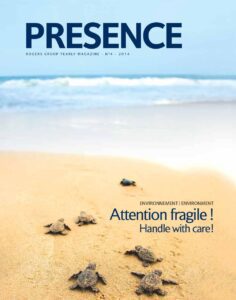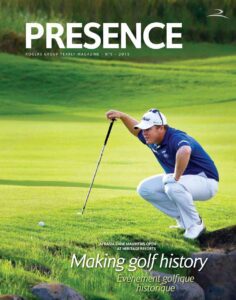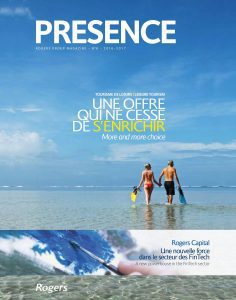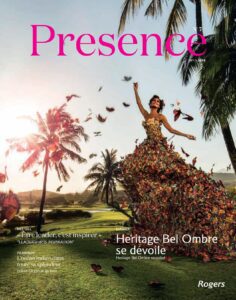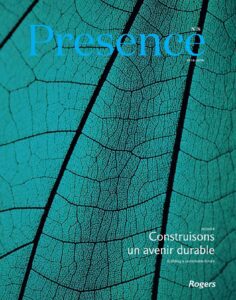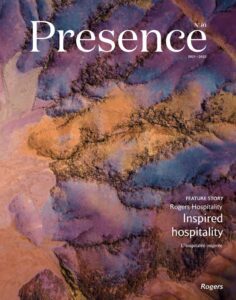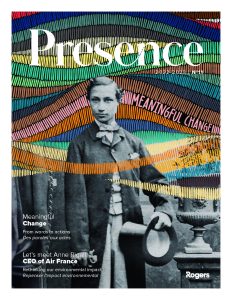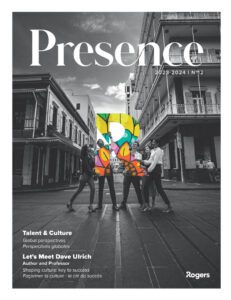After six years active involvement in the fight against HIV/AIDS, Rogers is re-orientating its social responsibility programme towards the environment and the conservation of coastal resources in particular. Amongst the partners it supports is Reef Conservation, whose activities centre on the conservation and restoration of the Mauritian marine environment. The association is in the forefront of coral reef preservation. Coral reefs are vulnerable organisms which have an essential role in marine ecosystems.
photos : eugène vitry | reef conservation
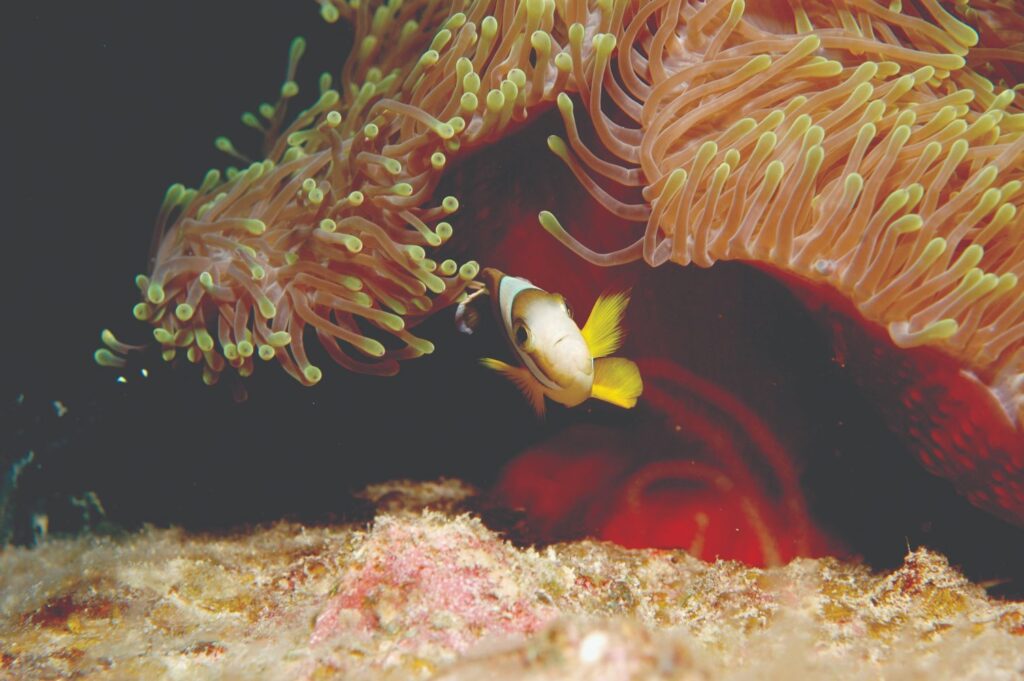
The island of Mauritius has just over 200 miles of coastline (332 km) and some 94 miles (150 km) of coral reefs that border a length of just over 150 miles (243 km) of lagoon areas. Rich in biodiversity, coral reefs serve both as habitat and source of food for many marine species, including fish. They are, however, vulnerable organisms, whose gradual degradation deserves our attention.
The degradation of these essential marine habitats is due to a number of factors. Some are natural, such as coral whitening, the proliferation of algae, global warming, soil erosion, sedimentation, tropical cyclones and the presence of a predator, the crown-of-thorns starfish (Acanthaster planci). These natural factors are augmented by others of anthropogenic origin, that is the result of human activity, and in particular the destruction caused by boat anchors and fishing nets, and the illegal trade in live coral removed from lagoons, as well as the pollution caused by rubbish and waste, and the infiltration of chemical fertilisers, insecticides and pesticides, which increase nitrate levels in sea water, resulting in a proliferation of green algae.
Rogers has a tradition of involvement in the development of Mauritius, an island state and, in this spirit, has decided, in tandem with its various partners, to concentrate its financial and human resources on one of the main axes envisioned within the Maurice Ile Durable (Sustainable Island – MID) project, environmental protection. Already involved environmentally in various ways through its business sectors and in line with its philosophy, Educate with a Commitment to Sustainability, the Group decided to adopt the same kind of focused approach which has been shown to have worked effectively in the fight against HIV/AIDS, the cause which it has strongly supported between 2007 and 2013.
The quality of the marine environment has a major impact on tourism and Rogers’ involvement in the sector through VLH (Veranda Resorts and Heritage Resorts) was the main factor behind this engagement. “The Veranda and Heritage hotels have a responsibility to be involved in minimising the impact of human activity on the marine environment,” says Audrey d’Hotman de Villiers, who runs the Rogers Foundation, the body that manages and co-ordinates the Groups’ social responsibility programme.
Through VLH, Rogers’ approach is focused inter alia on concerted action with proven and professional partners such as Reef Conservation. Founded in 2004, this NGO works for the conservation and restoration of the marine environment in Mauritius through the creation and management of scientific, educational and awareness projects. Since being set up, Reef Conservation has introduced a number of projects, mainly concentrated in the north of the island, aimed at maintaining the health – and thereby the attraction – of Mauritius’ lagoons. The importance of this is shown, for example, by the fact that the island attracted 50,000 people in 2012 because of the diving opportunities it offers.
VLH has been involved with Reef Conservation since the early days and their first joint activity was the installation of fixed mooring buoys in order to limit the damage caused to corals by boat anchors. Almost 40 have been fixed along the Mauritian coastline and a further 16 in the Rodrigues’ marine reserve. A percentage from the sale of bottles of water in VLH hotels is also given to Reef Conservation to assist with its project work.
In 2007, Reef Conservation opened a Beach Resource Centre on the public beach in Pereybere in collaboration with the Mauritius Scuba Diving Association and the Beach Authority. The main sponsor of the project is the UN Development Programme (UNDP) through its GEF Small Grants Programme. The Resource Centre offers practical training courses and aims to develop a culture of respect for the environment amongst local people. It also organises the Club Mer programme and summer training camps to teach youngsters the basics of first aid at sea and to learn how to snorkel, as well as about marine environmental conservation.
In 2008, the organisation, which has six full-time employees as well as volunteers and trainees, set up voluntary marine conservation areas in Trou d’Eau Douce and Roches Noires. “We are trying to encourage better lagoon management through establishing areas where no extraction is done. There are already three and preparations are being made for a fourth at Anse La Raie,” explains François Rogers, director of Croisières Australes, a company specialising in organising catamaran and other cruises, and who is also Board Chairman of Reef Conservation. The NGO has also been actively involved in the joint management of the Marine Protected Area in Balaclava.
VLH has been involved with Reef Conservation since the early days and their first joint activity was the installation of fixed mooring buoys in order to limit the damage caused to corals by boat anchors. Almost 40 have been fixed along the Mauritian coastline and a further 16 in the Rodrigues’ marine reserve. A percentage from the sale of bottles of water in VLH hotels is also given to Reef Conservation to assist with its project work.
In 2007, Reef Conservation opened a Beach Resource Centre on the public beach in Pereybere in collaboration with the Mauritius Scuba Diving Association and the Beach Authority. The main sponsor of the project is the UN Development Programme (UNDP) through its GEF Small Grants Programme. The Resource Centre offers practical training courses and aims to develop a culture of respect for the environment amongst local people. It also organises the Club Mer programme and summer training camps to teach youngsters the basics of first aid at sea and to learn how to snorkel, as well as about marine environmental conservation.
In 2008, the organisation, which has six full-time employees as well as volunteers and trainees, set up voluntary marine conservation areas in Trou d’Eau Douce and Roches Noires. “We are trying to encourage better lagoon management through establishing areas where no extraction is done. There are already three and preparations are being made for a fourth at Anse La Raie,” explains François Rogers, director of Croisières Australes, a company specialising in organising catamaran and other cruises, and who is also Board Chairman of Reef Conservation. The NGO has also been actively involved in the joint management of the Marine Protected Area in Balaclava.
Since November 2010, the Nauticaz Marine Discovery Centre at Anse La Raie has an equipped marine laboratory which serves as the base for Reef Conservation’s marine research and conservation. The Centre also brings in the local community, fishermen, those training to become marine eco-guides, schoolchildren and tourists. Visits there are tied in with the NGO’s marine environmental awareness activities.
VLH has also supported Reef Conservation’s eco-guide training programme. The training has been made possible through the setting up – again financed by VLH – of a training centre on the first floor of the organisation’s office building in Pereybere. The courses, which are recognised by the Mauritius Qualifications Authority (MQA), provide much more than simply guide training. Participants also learn about marine ecosystems, as well as about conservation efforts and what needs to be done for their further maintenance.
The eco-guide training programme has the added advantage of providing participants with alternative employment opportunities.
As part of awareness training, two-day courses are also run for boathouse and hotel staff on marine environmental matters. The NGO’s Board members are themselves actively involved in organising these courses. Awareness efforts extend to local primary schools. “We started with 10 pilot schools in 2007. Between 2008 and 2012, we were able to reach 2,400 children in 85 schools between Port Louis and Cap Malheureux,” says the project coordinator, Sameer Kaudeer. “We are also talking with the Ministry of Education about including basic marine science in the primary school curriculum.”
Another aspect of the organisation’s activities is the development of materials and pedagogical tools for improved education about the marine environment. In collaboration with two other NGOs, Eco-Sud and the Mauritius Marine Conservation Society, it has also launched a campaign, financed by the UNDP, providing information about the Balaclava and Blue Bay marine parks.
Long-term monitoring is essential for the conservation of the coral reefs and the marine ecosystem, which is why Reef Conservation has set up a programme to monitor the state of the lagoons and corals in the north of the island, beginning with Anse La Raie. It is an area even the Senior Adviser in the Prime Minister’s Office and Project Coordinator at the MID Commission, Sunil Dwarkasing, admits is “a formidable challenge. Live corals have decreased by 60% at Anse La Raie over the last five years and it’s the region in Mauritius where the corals have been worst affected.” (See box).
“The environment in Anse La Raie has become badly degraded,” adds François Rogers. “It is crucial that we involve the local community in the protection of the marine environment. To this end, we’ve had meetings with fishermen as well as with hotel groups and tour operators.”
In June 2012, Reef Conservation launched a feasibility study on the establishment of a voluntary marine conservation area in the Anse La Raie lagoon. “Sites have been identified and we have begun scientific studies for monitoring coral’s natural reproduction within the lagoon,” Celine Miternique, who is a Project Coordinator at Reef Conservation, tells us. “We intend to include the local community and fishermen in the monitoring process, as well as in observing the various organisms present in the lagoon. As there is a high level of sedimentation in the lagoon, we have also installed sediment barriers and clay blocks where coral larvae can attach themselves.”
With her knowledge of marine biology, Jennifer Elliott, a Mauritian student who is preparing a doctoral thesis at the Virginia Institute of Marine Science, has helped Reef Conservation launch a project at the beginning of the year to transplant corals taken from the Anse La Raie lagoon. The aim is to examine the possibility of using transplantation as a means of restoring the reefs. The initiative also benefits from the expertise of Professor Mark Patterson of the Virginia Institute of Marine Science.
Other projects at the planning stage include the creation of an underwater pathway to enable people to better visualise the lagoon’s fragility. The problem with efforts directed towards marine environmental preservation is that it takes a long time for the results to manifest themselves. For example, coral grow very slowly. It is also only too true that the process of destruction is much easier and quicker than that of reconstruction.
Five reef types
There are five reef types around Mauritius: fringing reefs, table reefs, atolls, reef flats and coral barrier reefs. Also found in the lagoons are 43 genera of hard coral and 159 species from 16 different families of scleractinia. “Work undertaken so far has enabled us to identify 18 species and three main types of coral in the Anse La Raie lagoon,” says Natalie Summers, who is a Project Coordinator at Reef Conservation.
“Directly in line with our national strategy”
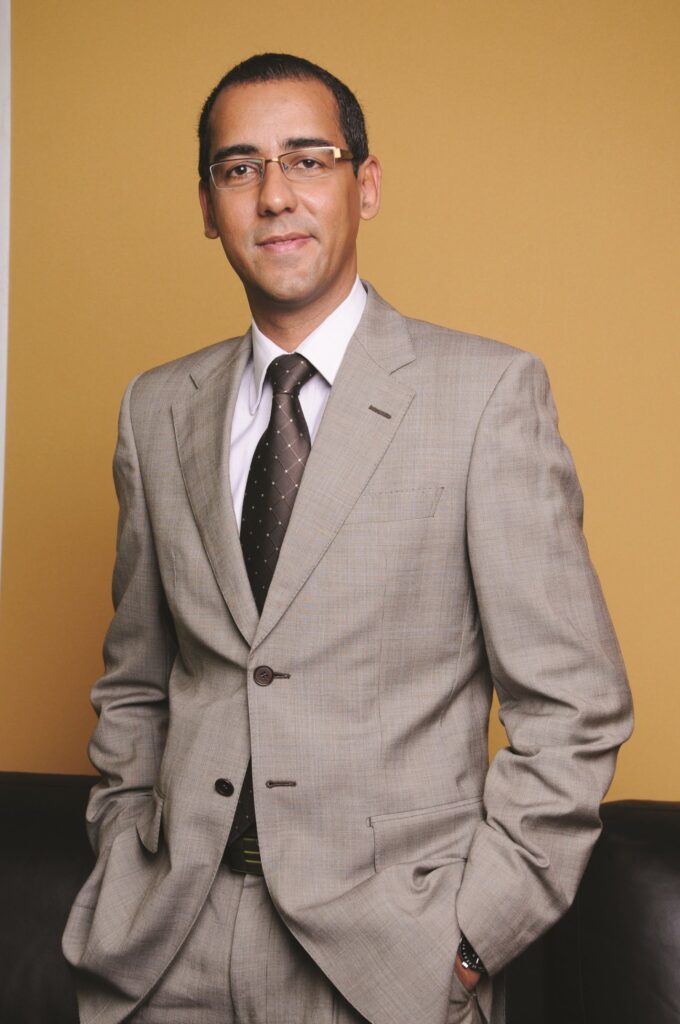
In the opinion of Sunil Dwarkasing, Senior Adviser in the Prime Minister’s Office and Project Coordinator at the Maurice Ile Durable Commission, “Rogers’ decision to support Reef Conservation is a very good one. It’s a very positive step that could inspire other major Mauritian companies.” Osman Mahomed, the project’s Executive Chairman, goes even further. “It is directly in line with our national strategy as a green ocean economy is one of the four programmes on which the Maurice Ile Durable project focuses.” Maurice Ile Durable is a programme targeted at adapting the country to meet the most stringent requirements of sustainable development by 2025. The Commission has recently submitted to the Council of Ministers a plan of action which contains recommendations for the next three years and a ten-year strategic plan. Given that other private and public bodies – such as the Ministry of Fisheries, the Mauritius Oceanography Institute, the University of Mauritius’ Faculty of Science and the NGO Eco-Sud – are also involved in the integrated management of coastal areas, they are both calling for the harmonisation and co-ordination of activities to avoid efforts being duplicated. “Each region has its own specificities and local knowledge, often held only by sea folk who live there, is important,” underlines Sunil Dwarkasing. He adds, “Marine biodiversity is not just the government’s responsibility. In fact, the challenge is so great that the participation of all partners who have something solid to contribute is more than welcome.”

